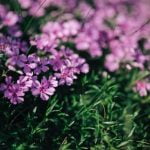Planting ideas for small gardens can be a daunting task for many garden enthusiasts. With limited space, it can be challenging to create a lush and vibrant garden that is both visually appealing and functional. However, with the right planning and creativity, small gardens can be transformed into beautiful and productive spaces.
When faced with the challenge of gardening in small spaces, it is important to carefully consider the selection of plants, garden layout, and maintenance requirements. Choosing the right plants for small gardens is crucial in maximizing space and creating a visually stunning display. In addition to plant selection, vertical gardening solutions and container gardening tips are effective strategies for making the most of limited space.
In this article, we will explore various planting ideas and solutions tailored specifically for small gardens. From low-maintenance plants to creative layouts and seasonal garden planning, there are numerous ways to make the most out of your small garden space. Whether you have a balcony, patio, or tiny backyard, these planting ideas will help you transform your small garden into a beautiful and thriving oasis.
Choosing the Right Plants for Small Gardens
When it comes to planting ideas for small gardens, choosing the right plants is crucial to maximize the limited space available. One of the key considerations is selecting plants that won’t outgrow their containers or allotted garden area. This means opting for compact varieties of shrubs, flowers, and vegetables that are well-suited for small spaces.
Some popular choices for small gardens include dwarf trees such as citrus or apple trees, compact herbs like basil and thyme, and flowering perennials like coneflowers and daisies. It’s also important to consider the growth habits of the plants, such as whether they spread aggressively or stay contained. In addition, choosing plants with a range of heights and textures can add visual interest to a small garden while making the most of limited space.
One useful tip is to look for “patio” or “dwarf” varieties of favorite plants when planning a small garden. These types are specifically bred to thrive in containers or small garden beds, making them perfect choices for those with limited gardening space. Ultimately, the key is to select plants that will flourish without overcrowding their surroundings and complementing each other in terms of size, color, and maintenance needs.
| Plant Type | Recommended Varieties |
|---|---|
| Dwarf Trees | Citrus (Meyer Lemon), Apple (Columnar Apple Trees) |
| Herbs | Basil (Spicy Globe), Thyme (Archer’s Gold) |
| Perennials | Coneflowers (PowWow White), Daisies (Tapestry Mix) |
Vertical Gardening Solutions
When it comes to small gardens, finding ways to maximize space is crucial. One effective solution for small gardens is the concept of vertical gardening. This method involves using walls, fences, or trellises as planting areas, allowing you to grow a wide variety of plants even in a limited space.
One popular option for vertical gardening is installing a vertical garden planter, which can be easily mounted on an outdoor wall or fence. This type of planter allows for the growth of herbs, vegetables, and small flowers without taking up precious ground space. Another idea is to use hanging baskets or tiered shelves to create a vertical garden display, making use of the vertical space available.
In addition to traditional methods of vertical gardening, there are also creative DIY solutions that can be tailored to suit your specific garden layout and style preferences. With the right approach, vertical gardening can be both functional and visually appealing in small gardens.
| Vertical Garden Method | Description |
|---|---|
| Vertical Garden Planter | Mounted on outdoor wall or fence; suitable for herbs, vegetables, and small flowers |
| Hanging Baskets/Tiered Shelves | Create a vertical garden display using available vertical space |
Container Gardening Tips for Small Spaces
Container gardening is a popular and practical option for small garden spaces. With the right container and plant selection, you can create a beautiful and flourishing garden in even the smallest of areas. Here are some tips to help you make the most of your small space with container gardening.
Choosing the Right Containers
When it comes to container gardening, choosing the right containers is essential. Opt for containers that are lightweight, durable, and have good drainage. This will ensure that your plants have the best growing conditions and that you can easily move your containers around to maximize sunlight exposure.
Plant Selection
The key to successful container gardening is selecting the right plants for your small space. Look for compact or dwarf varieties of flowers, herbs, and vegetables that are well-suited for container growth. Consider mixing different plants with varying heights and textures to create a visually appealing display.
Maintenance Tips
In small garden spaces, it’s important to stay on top of maintenance to keep your container garden looking its best. Regular watering, pruning, and fertilizing are essential for healthy plant growth. Additionally, be mindful of the sun exposure and temperature in your area when positioning your containers.
With these container gardening tips for small gardens, you can transform even the tiniest outdoor or indoor space into a vibrant and attractive garden area. By carefully choosing containers, plants, and practicing proper maintenance, you can enjoy a flourishing garden no matter how limited your space may be.
Maximizing Space With Creative Layouts
When it comes to planting ideas for small gardens, creative layouts can make all the difference in maximizing space and creating a beautiful garden oasis. Here are some tips and ideas for making the most of your limited garden space:
- Utilize Vertical Space: Consider using trellises, hanging planters, or wall-mounted containers to grow plants vertically. This not only saves space but also adds visual interest to your garden.
- Layer Your Plants: Create depth and dimension in your small garden by layering plants of different heights. Tall plants can be placed at the back, with medium and low-growing plants in front, creating a lush and full look without taking up too much ground space.
- Use Geometric Patterns: Arrange your plants in geometric patterns or alternating rows to create a sense of order and organization in your small garden. This can make the space appear larger and more intentional.
In addition to these layout ideas, consider incorporating multi-functional elements into your small garden design. You can use raised beds that also serve as seating, incorporate herbs or vegetables into ornamental displays, or create pathways that double as drainage channels during heavy rains. By thinking creatively about how you arrange your plants and functional elements, you can make the most of every square inch of your small garden.
Remember that with careful planning and a bit of creativity, even the tiniest of gardens can become a lush and inviting outdoor retreat. By implementing these creative layout ideas, you’ll be able to transform your small garden into a vibrant and thriving green space that brings joy year-round.
Low Maintenance Plants for Small Gardens
If you have a small garden, selecting low-maintenance plants can make gardening easier and more enjoyable. With limited space, it’s important to choose plants that require minimal care while still adding beauty and interest to your garden. When planning your small garden, keep in mind the amount of time you have available for maintenance and consider incorporating these low-maintenance plant options.
One option for low-maintenance plants in small gardens is succulents. These water-wise plants are perfect for busy individuals as they require very little water and attention. Succulents come in a variety of shapes, sizes, and colors, making them a versatile choice for small garden spaces. Whether planted in individual pots or incorporated into a larger arrangement, succulents add visual appeal without demanding much upkeep.
Another great option for low-maintenance plants is ornamental grasses. These grasses are durable, hardy, and require minimal care once established. They bring movement and texture to the garden with their graceful foliage and seed heads. Additionally, many ornamental grasses are drought-tolerant, making them a practical choice for small gardens where water conservation is important.
In addition to succulents and ornamental grasses, perennial flowers are another excellent choice for low-maintenance gardening. Once established, perennial flowers will return year after year with minimal effort on your part.
Look for varieties that are well-suited to your specific growing conditions, such as sun or shade requirements, to ensure their success in your small garden space. By incorporating these low-maintenance plant options into your small garden design, you can enjoy a beautiful and thriving outdoor space with minimal effort required on your part.
Seasonal Garden Planning for Year-Round Beauty
When planning a small garden, it’s important to consider the seasons to ensure that your garden looks beautiful all year round. By carefully selecting plants that bloom at different times of the year, you can create a visually appealing and ever-changing landscape in your small space.
Spring
In the spring, consider planting bulbs such as daffodils, tulips, and crocuses for vibrant pops of color. These early bloomers will bring life to your garden after the dreary winter months. Additionally, flowering trees and shrubs like cherry blossoms and lilacs can add height and interest to your small garden.
Summer
For the summer months, choose plants that thrive in the heat and sun. Consider colorful annuals like petunias, marigolds, and zinnias for a burst of summer color. Perennials like coneflowers, daylilies, and black-eyed Susans will also provide long-lasting blooms throughout the summer season.
Fall
As the temperatures cool down, your fall garden can still be filled with an array of colors. Plant ornamental grasses for texture and height, along with fall-blooming perennials such as asters and mums. Don’t forget about decorative elements like pumpkins or ornamental kale for added visual interest.
By carefully planning out your garden with seasonal varieties in mind, you can maintain a beautiful and ever-changing landscape in even the smallest of spaces. Take advantage of each season’s unique offerings to keep your small garden looking fresh and inviting throughout the year.
Using Color and Texture to Create Visual Interest
When it comes to small garden spaces, using color and texture strategically can greatly enhance the visual appeal of your outdoor area. By implementing a thoughtful combination of plants, flowers, and foliage, you can create an eye-catching display that maximizes the impact of your limited space.
One effective way to use color and texture is through layering. This involves arranging plants in such a way that taller ones are placed behind shorter ones, creating depth and dimension. Brightly colored flowers or plants with interesting foliage can be strategically placed in the front to draw attention, while more subdued or contrasting colors can be used in the background to create a sense of depth.
In addition to layering, consider incorporating various textures into your small garden design. Mixing plants with different leaf shapes and sizes, as well as varying flower types, can add visual interest and complexity to your garden. For example, combining delicate ferns with bold succulents can create a visually captivating contrast that adds depth and intrigue to your small space.
Another important aspect of using color and texture in small gardens is considering the overall aesthetic you want to achieve. Whether you prefer a harmonious blend of colors or a more eclectic mix, experimenting with different combinations can help you achieve your desired look while making the most of your limited gardening space. With careful planning and consideration, planting ideas for small gardens can be both visually stunning and functional for any outdoor area.
Incorporating Functional Elements Like Herbs or Vegetables
When designing a small garden, incorporating functional elements like herbs or vegetables can be a practical and visually appealing way to make the most of your space. Utilizing herbs and vegetables not only adds a purposeful element to your garden but also provides you with fresh ingredients for cooking. Here are some ideas for incorporating functional elements into your small garden:
- Vertical herb garden: Utilize vertical space by installing a DIY herb wall or hanging planters. This not only saves space but also creates a visually striking feature in your garden.
- Container vegetable garden: Planting vegetables in containers is an excellent option for small gardens. Choose compact varieties of tomatoes, peppers, lettuce, and herbs that thrive in pots and containers.
- Herb spiral: Create an herb spiral to maximize planting space while providing optimal growing conditions for different types of herbs. This design not only looks visually interesting but also maximizes space efficiency.
By incorporating these functional elements into your small garden, you can enjoy the benefits of fresh herbs and vegetables while adding a practical and visually appealing dimension to your outdoor space.
In addition to the practical benefits, incorporating herbs and vegetables into your small garden can also contribute to the overall aesthetic appeal of the space. When properly integrated into the overall design, edible plants can add texture, color, and visual interest to your garden. Mixing herbs with ornamental plants can create a dynamic and diverse landscape within a limited area.
Whether you have a balcony, patio, or tiny backyard, there are numerous ways to incorporate functional elements like herbs or vegetables into your small garden. Embracing creative and innovative methods allows you to make the most of limited space while enjoying the rewards of a thriving herb or vegetable garden.
Conclusion
In conclusion, gardening in a small space presents its own unique set of challenges, but with the right approach, it can be just as rewarding as gardening in a larger area. By choosing the right plants, utilizing vertical and container gardening techniques, and getting creative with layout and design, you can make the most of your small garden space.
When it comes to planting ideas for small gardens, it’s important to prioritize plants that will thrive in your specific conditions and require minimal maintenance. Low maintenance plants will allow you to enjoy your garden without feeling overwhelmed by constant upkeep.
Additionally, don’t be afraid to incorporate functional elements like herbs or vegetables into your small garden. Not only will they provide you with fresh ingredients for cooking, but they can also add visual interest and diversity to your garden. Overall, with thoughtful planning and strategic planting choices, even the smallest of gardens can become a beautiful and tranquil retreat.
Frequently Asked Questions
How Do You Arrange Plants in a Small Garden?
When arranging plants in a small garden, it’s important to consider the size and growth habits of each plant. Place taller plants at the back or in the center as focal points, while shorter plants can be grouped around them to create layers of visual interest.
How Do You Layout a Small Garden?
A well-designed layout for a small garden involves maximizing space by using techniques like vertical gardening, creating defined outdoor “rooms” using hedges or trellises, and utilizing containers for flexibility. The key is to create a layout that provides both beauty and functionality within the limited space.
How Can I Make My Small Garden Nice?
To make a small garden nice, focus on creating an inviting atmosphere with comfortable seating areas, pathways that lead to different parts of the garden, and incorporating elements like water features or decorative lighting. Choosing a cohesive color scheme and adding personal touches such as ornaments or artwork can also enhance the overall appeal of the space.

Welcome to my gardening blog! I am passionate about plants and enjoy sharing my knowledge and experiences with others. In this blog, I will write about everything related to gardening, from tips on how to get started to updates on my own garden projects.





